Types of Ikat
A six yard wonder, a epitome of a well-designed handicraft with a finely woven fabric, exquisite varieties of colors & textures contrasted with a beautifully woven border when draped by a Women, arouses the sensual attire and increases her Charm, indeed Saree is the soul of India & without Saree India would not have been India.
Silk Sarees have edored women since ages. Varieties of silk Sarees available in India from Kashmir to Kanyakumari have fascinated the beauty of women. Name any silk – Kashmir Silks, Benaras Silks, Bengal Silks, Assam Silks, Paithani Silks, Gadwal Silk, Sambalpur Silk, Mangalagiri Silk, Tussar Silk, Pochampally Silk, Baluchari Silk, Mysore Silk, Kanchi Silk, Patola Silk, Uppada Silk – Silk is a cherished fabric, and a multitude of weaving techniques and styles have been employed since ages – to suit various local and global choices.
It is astounding that almost every region of India has its own special, native silk saree. Most of these are hand-woven, handloom sarees, and are often made by either pure silk fiber or blended (with cotton yarn and zari) silk fiber.
There are many varieties of silk weaving techniques and popular among them is Ikat weaving.
Popularly referred to as ‘Silk City of India’, Pochmapally from Telangana has given exceptional silk fabrics. Most sarees boast mesmeric geometric patterns on them handcrafted by expert artisans through the Ikat dyeing method.
These skilled artisans have decades of expertise in creating intricate designs and color combinations to create perfect masterpieces.
Art of Ikat weaving
Pochampally Ikkat Silk Sarees provide phenomenal comfort with a hint of elegance and grandeur that’s customarily expected from silk fabric.
Ikat literally means tie. Ikat refers to dyeing technique used to create the design of fabric. This resist dyeing method refers to the technique of creating the resist by binding bundles or single yarns. Then a tight wrapping is applied on the yarns in a geometric pattern and then these yarns are dyed.
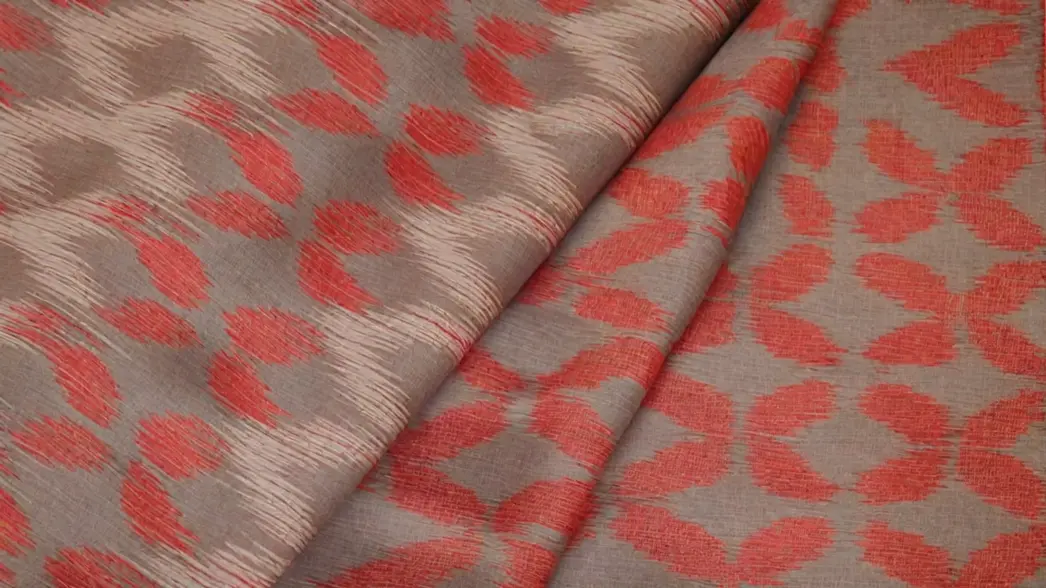
In Telangana State, the Pochampally Ikat is also popularly known as Buddabhashi, Chitki and Pogudubandhu. But, it is known as Pochampally all across the country.
Ikkats are of 3 types: Warp Ikat, Waft Ikat & Double Ikat
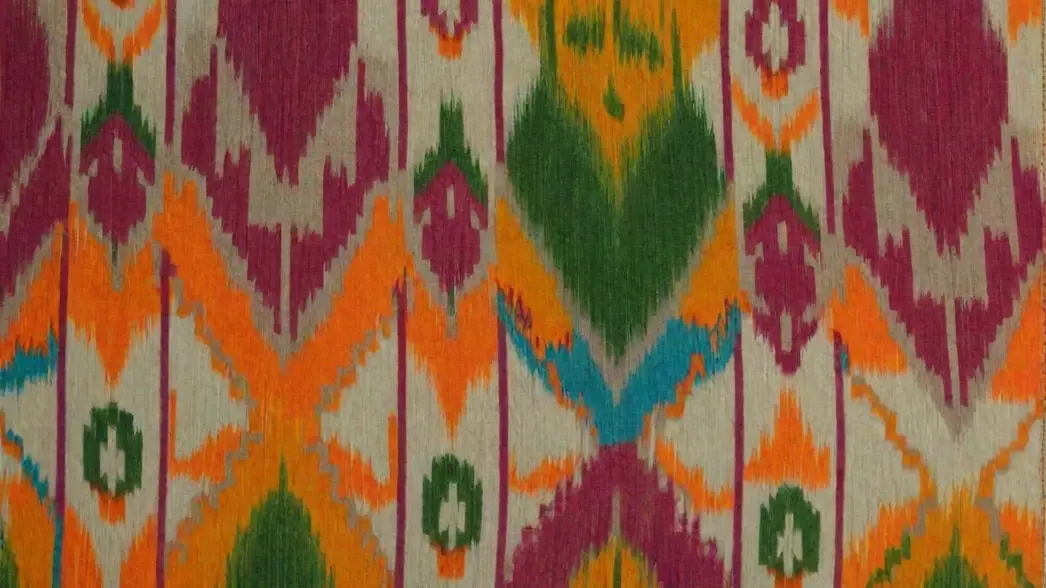
Warp ikat or Single Ikat is a tie and dye method where only the warp is resist-dyed and then woven with the weft. The weft may be dyed with a single color or have no color at all. In such a technique, the pattern is clearly visible on the warp even before it is woven with the weft. Warp yarn could be of silk, jute, cotton or any other suitable fiber.
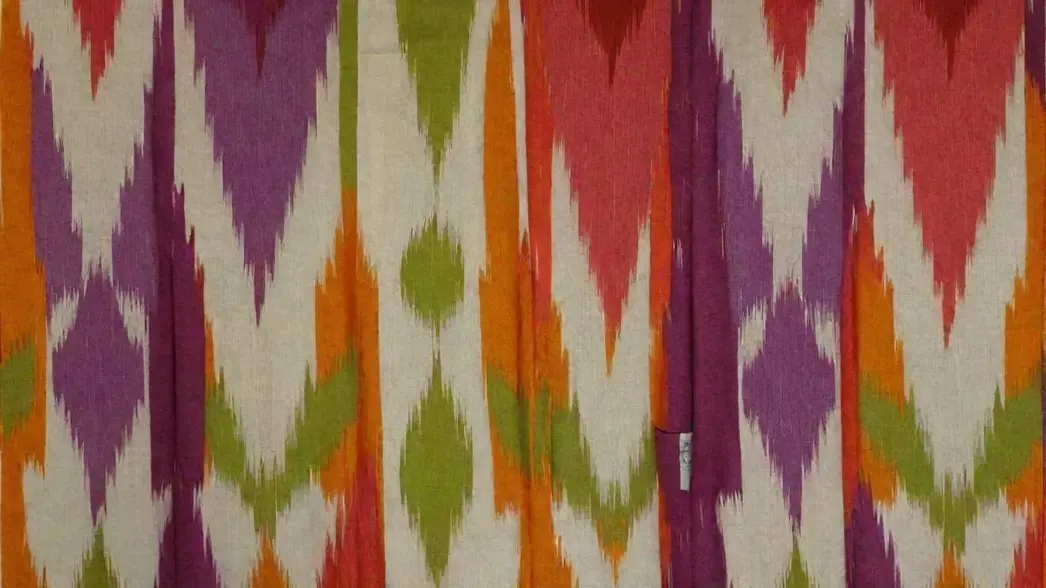
Weft ikat is a technique where you will see dye patterns on the weaving weft yarns. Hence, the ikat patterns will become visible as the weaving progresses. Such a technique is time-consuming as artisans need to precisely line up the weft yarns for perfect design outcomes. It is generally employed when overall results are much more important than the precision of patterns.
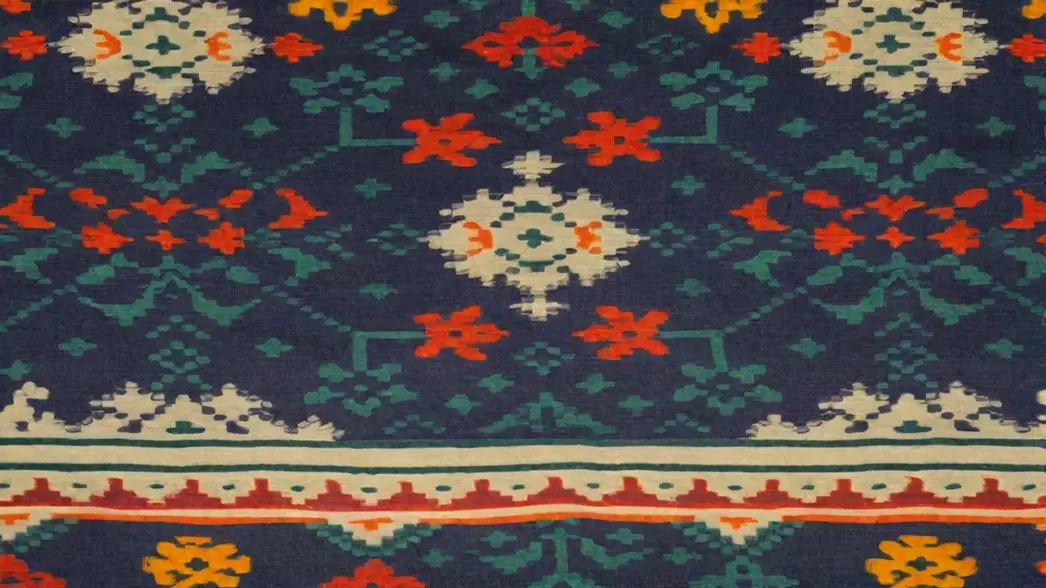
Double Ikat is the process where both- the warp and the weft go through resist dyeing procedure. After which, they are woven into a single cloth. As a matter of fact, this is the most difficult and expensive type of weaving process.
Pochampally Ikat makes use of the double Ikat method of transferring intricate patterns onto the cloth.
Another thing that makes Ikat stand out from the rest is the apparent blurriness of the geometric design. The blurriness signifies how extremely difficult it was for the weaver to line up dyed yarns to make sure the finished cloth has perfect Ikat patterns.
Ikkat sarees with complicated patterns, multiple color hues and slight blurriness are quite difficult and time-consuming to make. Thus, these sarees are much more expensive than the ones with simple patterns.
Other types of Ikats
Pochampally or Double Ikats are widely produced in the villages of Bhoodan Pochampally and Puttapaka in the state of Telangana.
You must know that Pochampally, Patola and Ikat- all of these refer to the same double ikkat weaving technique. The main difference between a Patola and Pochampally saree is their design language and geographical location. This refers to the fact that Patolas are made in Patan, Gujarat, while Pochampallys belong to Telangana.
But apart from these, there are a plethora of Ikat techniques flourishing in other parts of India.
Some of the popular ikat weaving techniques are as follows:
- The indigenous Sambalpuri Ikat practised in Orissa is quite intricate.
- Whereas the Patan Patola- a rare technique of Double Ikat is made in Patan of Gujarat. Patan Patola boasts sharp Ikat patterns and demands great effort in dyeing and weaving. It is made with the use of premium silk yarns and generally features myriads of colors. Some Patan patola sarees might have no repeats, whereas others have repeated motifs throughout the saree.
- Another double ikat weaving is also carried out in Puttapaka of Nalgonda District and it is known as Puttapaka Saree.
- Orissa’s Pasapalli ikat saree has some kind of chequered design on it and uses the same method as the Sambalpuri ikat. ‘Pasapalli’ word derives itself from the word ‘Pasa’ which means a chequered board game (like Ludo).
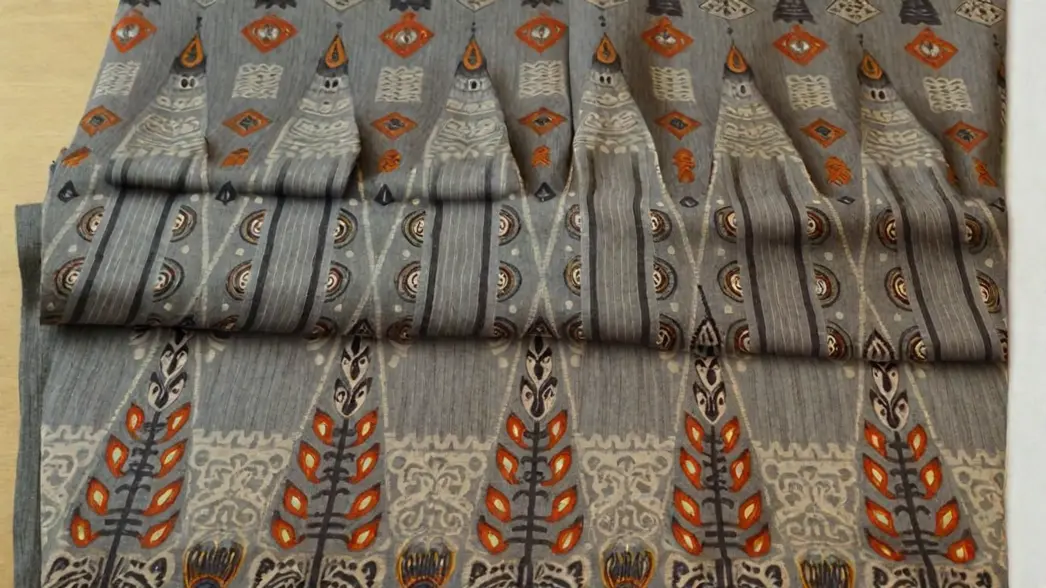
Fabrics Used
In all types of Ikat, the color on the cloth is obtained from natural resources. And, the fabrics used to produce these Pochampally sarees are mostly cotton, silk, and SICO (a blend of cotton and silk).
The smooth texture, neatness and lightweight nature of the fabric are factors that differentiate Pochampally Ikat sarees from other types of Ikats.
Pochampally and Patola saree both share similar tie-and-dye technique, but they also share an interesting tale of migration. The Salvis migrated from South India to Patan to weave silk Patola Sarees for the King. On the other hand, two brothers belonging to the traditional weaving community, named Venkiah and Malliah migrated from Chirala to Pochampally.
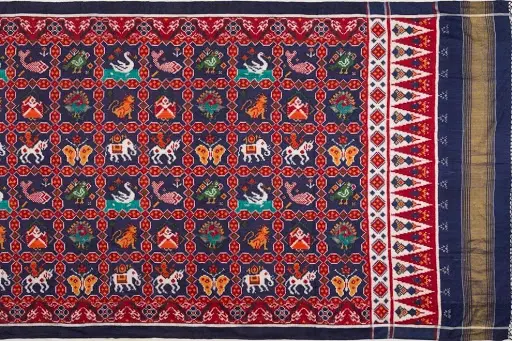
Patola Motifs from the early 19th Century, Patan- Gujarat
Pochampally Pattu Sarees or Ikkat Pattu Sarees are all about silk, as the name “pattu” itself is a traditional name of silk in Telugu and Tamil languages of South India.
Initially, Pochampally or Ikkat Sarees were only woven in coarse cotton fabrics, but later silk became a popular choice of fabric after all. In fact, the Bhoodan Pochampally town had the title of being a ‘silk mine’ of India up its sleeve back in the 18th century.
Pochampally silk sarees are lightweight and extremely comfortable to wear, making them perfect for summers! The classic and rich look of silk makes it an ideal choice for weddings and festivals.
Motifs and Colors
Traditionally, the famous Pochampally silks and sarees only had geometric patterns on them. But in today’s date, you will see various modern intricate motifs making their way into these weavings such as beautiful flowers, leaves, circles, paisleys and more. These intricate details give a mesmerizing touch to the Pochampally sarees, as the Ikats are smooth and sharp.
Some Pochampally sarees even flaunt bold geometric lines or bootie designs.
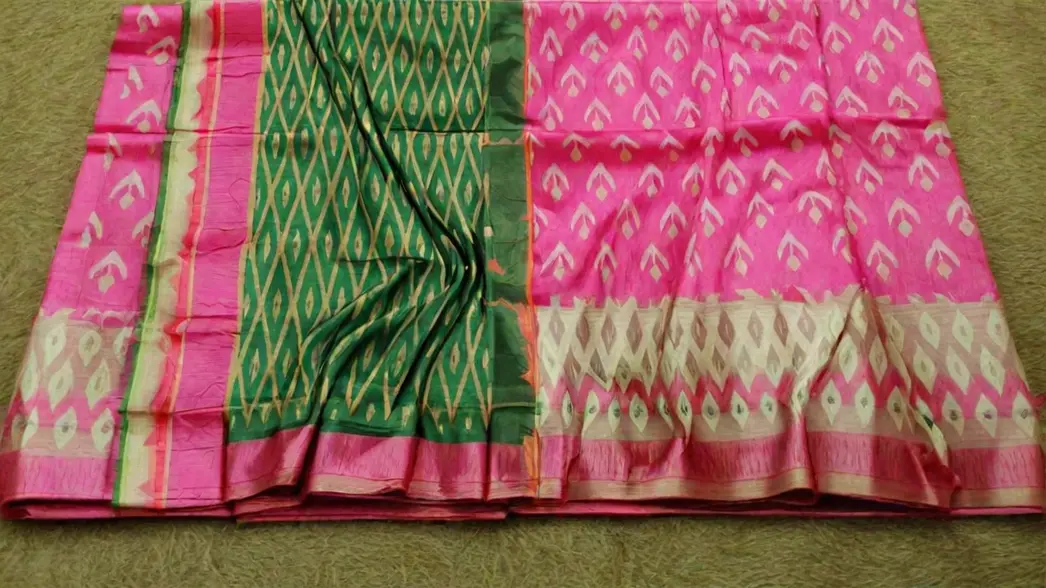
Pochampally Ikat has also marked its place as “iconic saree weaving clusters of India” in UNESCO’s tentative list of world heritage.
Use this component for creating a list of featured elements to which you want to bring attention.